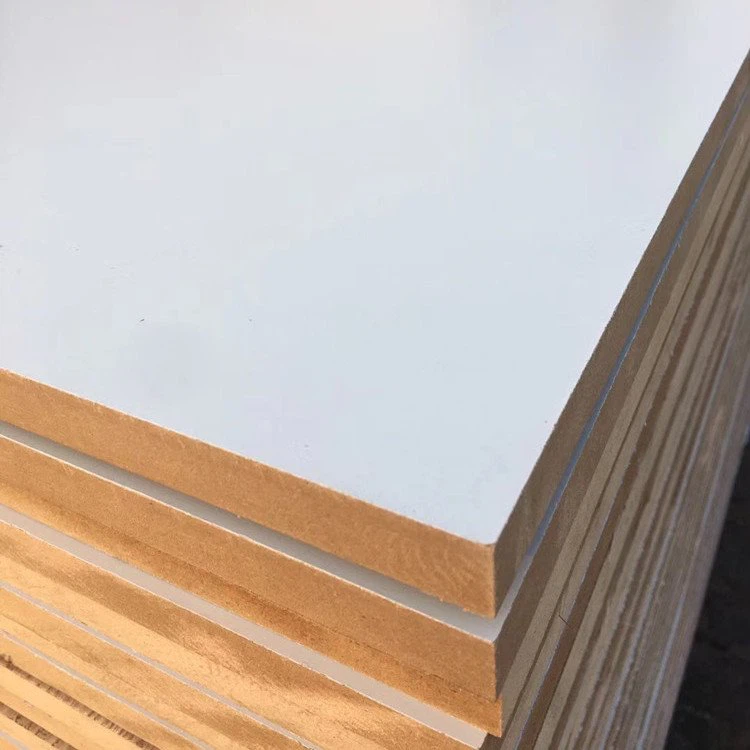MDF with PVC Film: A Comprehensive Guide
Medium-Density Fiberboard (MDF) with PVC film is a versatile, durable, and aesthetically pleasing material widely used in various industries, including furniture manufacturing, interior design, and construction. This guide explores everything you need to know about MDF with PVC film, from its composition and applications to its advantages, disadvantages, and maintenance.
What is MDF with PVC Film?
MDF is an engineered wood product made by breaking down hardwood or softwood residuals into wood fibers, combining them with wax and resin binders, and forming panels under high temperature and pressure. When covered with a layer of PVC (Polyvinyl Chloride) film, the MDF surface gains additional properties, including enhanced aesthetics, water resistance, and ease of cleaning.
PVC film is a thermoplastic polymer available in various colors, textures, and finishes, such as matte, glossy, or wood grain. The combination of MDF and PVC film creates a versatile material suitable for many applications.
Manufacturing Process
- MDF Production:
- Wood fibers are refined and mixed with resin and wax.
- The mixture is compressed under high heat and pressure to form panels.
- Surface Preparation:
- MDF panels are sanded and primed to ensure smoothness and uniformity.
- PVC Film Application:
- A layer of adhesive is applied to the MDF surface.
- PVC film is laminated onto the board using heat and pressure.
- The laminated boards are trimmed and finished for uniformity.
Properties of MDF with PVC Film
- Durability: Resistant to scratches, dents, and everyday wear and tear.
- Moisture Resistance: PVC film acts as a barrier against water, making it ideal for humid environments.
- Ease of Maintenance: Smooth surfaces allow for easy cleaning with a damp cloth.
- Aesthetic Versatility: Available in numerous designs, colors, and textures.
- Cost-Effectiveness: Cheaper than solid wood or other premium materials.
Applications
1. Furniture Manufacturing:
- Cabinets, wardrobes, and shelves.
- Office desks and partitions.
2. Interior Design:
- Wall panels and ceilings.
- Decorative moldings.
3. Kitchen and Bathroom Components:
- Modular kitchen cabinets.
- Bathroom vanities.
4. Retail and Commercial Spaces:
- Display units and kiosks.
- Shop fittings and signage.
Advantages of MDF with PVC Film
- Enhanced Aesthetics: The wide range of finishes provides flexibility in design.
- Eco-Friendly: MDF utilizes wood waste, reducing the need for solid wood.
- Customizable: Easy to cut, shape, and install.
- Lightweight: Easier to handle and transport compared to solid wood.
- Affordable: A cost-effective alternative to traditional materials.
Disadvantages of MDF with PVC Film
- Limited Heat Resistance: Prolonged exposure to high temperatures can deform the PVC layer.
- Vulnerability to Deep Scratches: While resistant to minor abrasions, deep scratches may expose the MDF core.
- Adhesive Sensitivity: Improper bonding during manufacturing can lead to peeling over time.
- Environmental Concerns: PVC production and disposal have ecological impacts.
Maintenance Tips
- Regular Cleaning: Use a soft, damp cloth to wipe the surface. Avoid abrasive cleaners.
- Avoid Excessive Heat: Keep MDF with PVC film away from direct heat sources.
- Protect from Sharp Objects: Use protective pads or covers to prevent scratches.
- Inspect for Peeling: Address any peeling or lifting edges promptly with appropriate adhesives.
Frequently Asked Questions (FAQs)
1. Can MDF with PVC film be used outdoors?
- It is generally not recommended for outdoor use as prolonged exposure to sunlight and weather conditions can damage the PVC film and MDF core.
2. Is MDF with PVC film environmentally friendly?
- While MDF uses recycled wood fibers, PVC production has some environmental drawbacks. Look for manufacturers offering eco-friendly or recycled PVC options.
3. Can I repaint MDF with PVC film?
- Repainting is challenging due to the smooth PVC surface. Specialized primers may be required to ensure paint adhesion.
4. How does it compare to solid wood?
- MDF with PVC film is more affordable, lightweight, and easier to maintain but lacks the natural texture and strength of solid wood.
5. What thickness options are available?
- Common thicknesses range from 6mm to 25mm, depending on the application requirements.
6. Is it water-resistant?
- Yes, the PVC film provides a moisture-resistant layer, but the edges and joints should be sealed properly to prevent water ingress.
7. How long does it last?
- With proper care and maintenance, MDF with PVC film can last for many years, typically 10-15 years or more in indoor settings.
8. Can it be recycled?
- Recycling is complex due to the combination of materials. Consult local recycling facilities for guidance.
